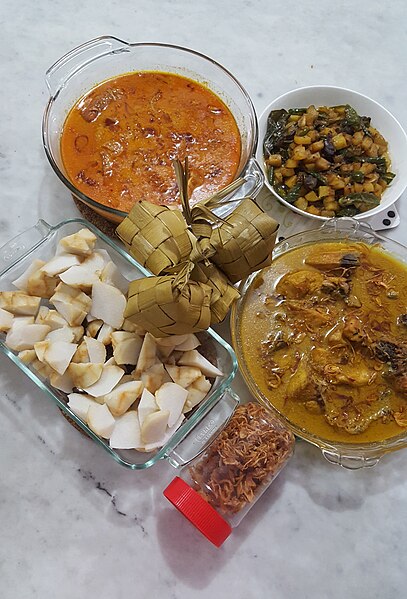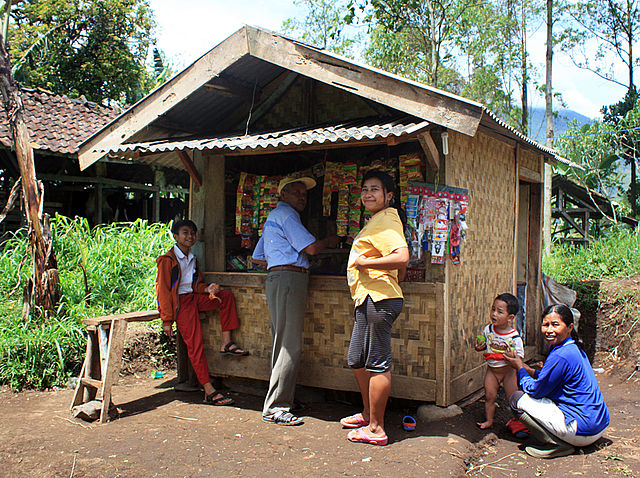Indonesian cuisine is a collection of various regional culinary traditions that formed in the archipelagic nation of Indonesia. There are a wide variety of recipes and cuisines in part because Indonesia is composed of approximately 6,000 populated islands of the total 17,508 in the world's largest archipelago, with more than 1,300 ethnic groups.
Example of Indonesian Sundanese meal; ikan bakar (grilled fish), nasi timbel (rice wrapped in banana leaf), ayam goreng (fried chicken), sambal, fried tempeh and tofu, and sayur asem; the bowl of water with lime is kobokan.
Opor ayam (curry style), gulai, ketupat, diced potatoes with spices, and bawang goreng served during Lebaran (Eid al-Fitr) in Indonesia
Indonesia is the home of sate; one of the country's national dishes, there are many variants across Indonesia.
Bas-relief of Karmawibhanga of 9th century Borobudur depicts a rice barn and rice plants being infested by mouse pestilence. Rice farming has a long history in Indonesia.
A warung is a type of small family-owned business — small retail, eatery, or café — in Indonesia. A warung is an essential part of daily life in Indonesia. Over time, the term warung has shifted somewhat — especially among foreign visitors, expatriates, and people abroad — to refer more specifically to a modest Indonesian eatery or a place that sells Indonesian retail items. But for the majority of Indonesians, it still refers to a small, neighborhood convenience shop, often a front room or booth in a family's home.
A village warung in Garut, West Java, Indonesia.
A 19th-century image of warung during the colonial period
Warung rokok, cigarette-selling warung.
Warung kopi, small coffee shop selling coffee, tea, and snacks.








